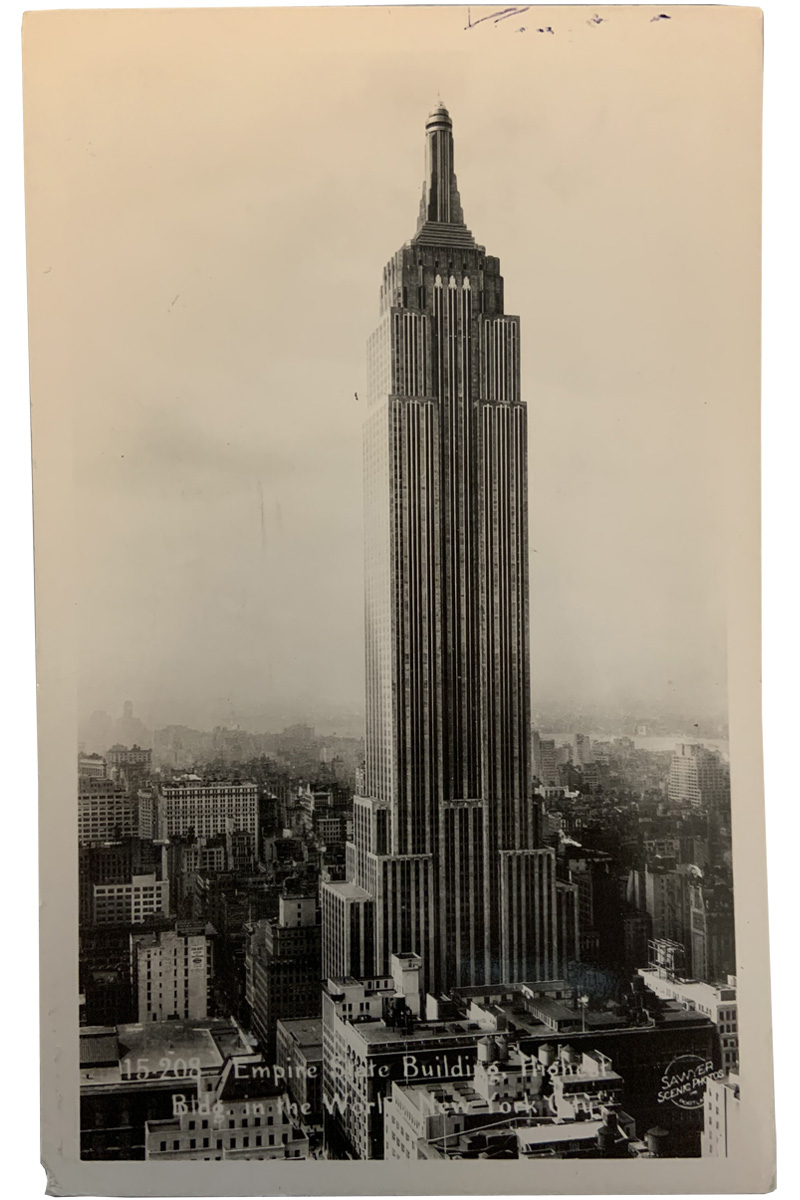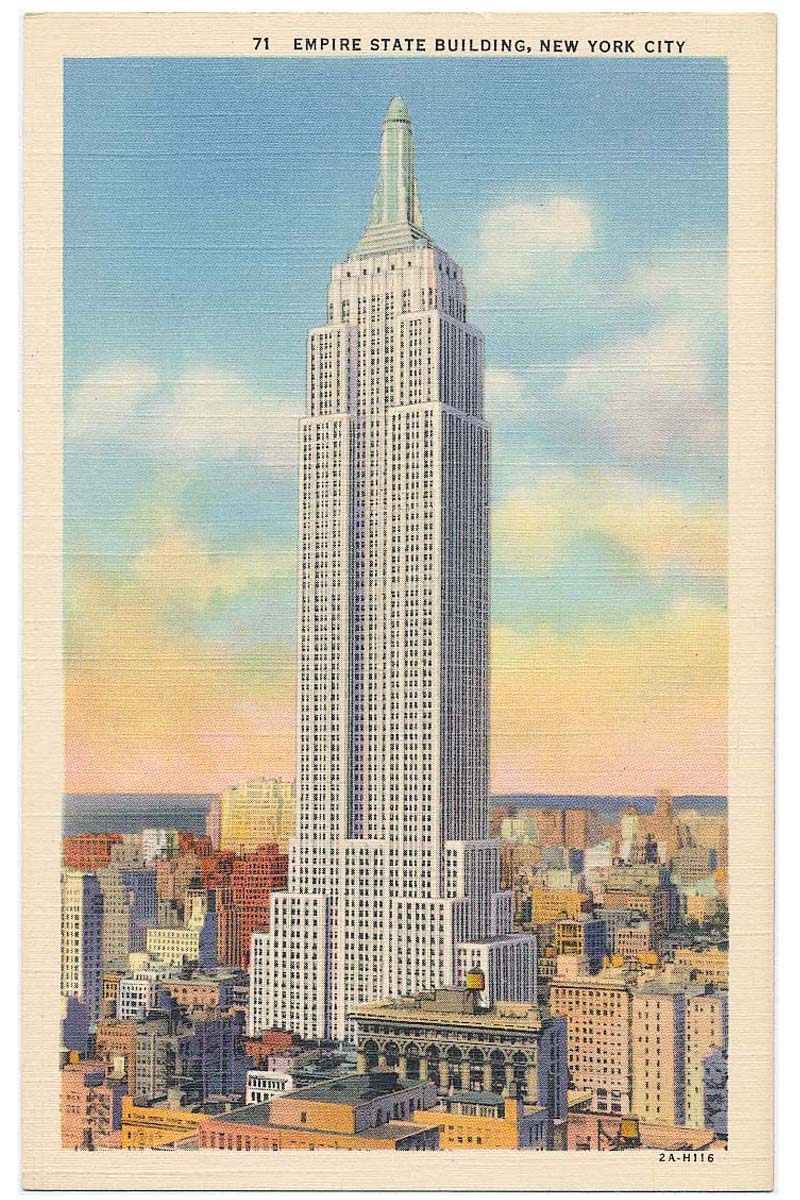The Empire State Building stands as an architectural marvel and a symbol of American ingenuity. It has long been celebrated for its towering height, reaching an impressive 443.2 meters including its antenna. This iconic skyscraper continues to inspire awe among visitors and engineers alike.
Since its completion in 1931, the Empire State Building has maintained its status as one of the world's most recognizable structures. Its height, measured at 381 meters to the roof and 443.2 meters including the antenna, makes it a focal point of the New York City skyline. This article will delve into the dimensions, history, and significance of the building, offering a detailed exploration for enthusiasts and professionals alike.
This guide aims to provide an in-depth understanding of the Empire State Building's height in meters, its architectural achievements, and its enduring legacy. Whether you're a traveler, architecture enthusiast, or simply curious about this iconic landmark, this article offers valuable insights into its design and dimensions.
Read also:Discover The Iconic Key West Dollar Bill Bar A Unique Experience In Paradise
Table of Contents
- Introduction
- Empire State Building Overview
- Height Details of the Empire State Building
- Construction History
- Architectural Style
- Famous Facts About the Empire State Building
- Maintenance and Upgrades
- Comparison with Other Skyscrapers
- Environmental Impact and Sustainability
- Visitor Experience
- Conclusion
Empire State Building Overview
The Empire State Building is located at 350 Fifth Avenue in Midtown Manhattan, New York City. Designed by Shreve, Lamb & Harmon, it was completed in 1931 and became the tallest building in the world at the time. Standing tall at 381 meters to the roof and 443.2 meters including its antenna, the building has become a global icon of architecture and engineering.
Key Features of the Building
Key features of the Empire State Building include:
- Art Deco architectural style
- 102 floors, including observation decks
- Famous for its annual lighting displays
- Designated a National Historic Landmark
The building's construction set new standards for skyscraper design and engineering, making it a benchmark for future projects worldwide.
Height Details of the Empire State Building
The height of the Empire State Building is a defining characteristic of its architectural significance. Measured at 381 meters to the roof and 443.2 meters including the antenna, it was the tallest building in the world for nearly 40 years. The building's height reflects the ambition and vision of its designers and engineers during the early 20th century.
Measurements and Dimensions
Here are the detailed measurements:
- Height to the roof: 381 meters (1,250 feet)
- Total height including antenna: 443.2 meters (1,454 feet)
- Floor count: 102 floors
- Floor area: 208,879 square meters (2,248,279 square feet)
These dimensions highlight the building's scale and its dominance in the New York City skyline.
Read also:Chris Brown Autobiography The Journey Of A Musical Icon
Construction History
The construction of the Empire State Building began on March 17, 1930, and was completed in just 410 days, a remarkable feat for its time. Over 3,400 workers were involved in the project, and the building was officially opened on May 1, 1931, by President Herbert Hoover. The rapid construction process was made possible by innovative techniques and a streamlined design.
Challenges During Construction
Despite the speed of construction, several challenges were faced:
- Strict safety regulations
- Coordination of materials delivery
- Weather conditions affecting progress
These challenges were overcome through meticulous planning and execution, resulting in one of the most iconic structures in the world.
Architectural Style
The Empire State Building exemplifies the Art Deco architectural style, characterized by geometric shapes, bold lines, and lavish ornamentation. The design reflects the optimism and prosperity of the Roaring Twenties, even as the Great Depression loomed on the horizon. The building's distinctive spire and setbacks are iconic features of the Art Deco movement.
Influence on Modern Architecture
The Empire State Building's architectural style has influenced countless skyscrapers worldwide. Its design elements, such as the stepped setbacks and decorative motifs, continue to inspire architects today. The building's enduring popularity is a testament to the timeless appeal of Art Deco design.
Famous Facts About the Empire State Building
Here are some fascinating facts about the Empire State Building:
- It was the tallest building in the world for nearly 40 years.
- The building features in numerous films, including "King Kong" and "Sleepless in Seattle."
- It was designated a National Historic Landmark in 1986.
- The building's lights are often illuminated in colors to celebrate special occasions.
These facts underscore the building's cultural significance and its role in popular culture.
Maintenance and Upgrades
Maintaining the Empire State Building requires continuous effort and investment. Over the years, numerous upgrades have been made to improve its energy efficiency and structural integrity. In 2009, a major retrofit project was undertaken to reduce the building's carbon footprint, resulting in significant energy savings.
Recent Renovations
Recent renovations include:
- Upgrading the building's heating and cooling systems
- Installing energy-efficient lighting
- Improving accessibility for visitors
These efforts ensure that the Empire State Building remains a sustainable and modern landmark.
Comparison with Other Skyscrapers
While the Empire State Building is no longer the tallest building in the world, it remains one of the most iconic. Comparisons with other skyscrapers highlight its unique qualities:
Empire State Building vs. Burj Khalifa
Although the Burj Khalifa in Dubai stands at 828 meters, the Empire State Building's historical significance and cultural impact set it apart. The Empire State Building's design and engineering innovations paved the way for modern skyscrapers like the Burj Khalifa.
Environmental Impact and Sustainability
The Empire State Building has taken significant steps to reduce its environmental impact. Through energy-efficient upgrades and sustainable practices, the building has become a model for green skyscrapers. Its commitment to sustainability aligns with global efforts to combat climate change.
Sustainability Initiatives
Key sustainability initiatives include:
- Energy-efficient lighting systems
- Improved insulation and windows
- Renewable energy sources
These initiatives have significantly reduced the building's carbon footprint, demonstrating its commitment to environmental stewardship.
Visitor Experience
Visitors to the Empire State Building can enjoy breathtaking views from its observation decks, located on the 86th and 102nd floors. These decks offer panoramic views of New York City and beyond, making them a must-visit attraction. The building also features exhibits and interactive displays that provide insight into its history and construction.
Best Time to Visit
For the best experience, consider visiting:
- Early morning for fewer crowds
- Evening for stunning sunset views
- Winter for clearer skies
Planning your visit strategically can enhance your experience and allow you to fully appreciate the building's beauty.
Conclusion
The Empire State Building stands as a testament to human ingenuity and architectural excellence. Its height, measured at 381 meters to the roof and 443.2 meters including the antenna, continues to inspire awe and admiration. This article has explored the building's dimensions, history, and significance, offering a comprehensive guide for enthusiasts and professionals alike.
We invite you to share your thoughts and experiences in the comments below. For more insights into iconic landmarks and architectural marvels, explore our other articles. Thank you for reading, and we hope you enjoyed this journey into the world of the Empire State Building!
Data sources: Empire State Building Official Website, National Park Service, ArchDaily.


